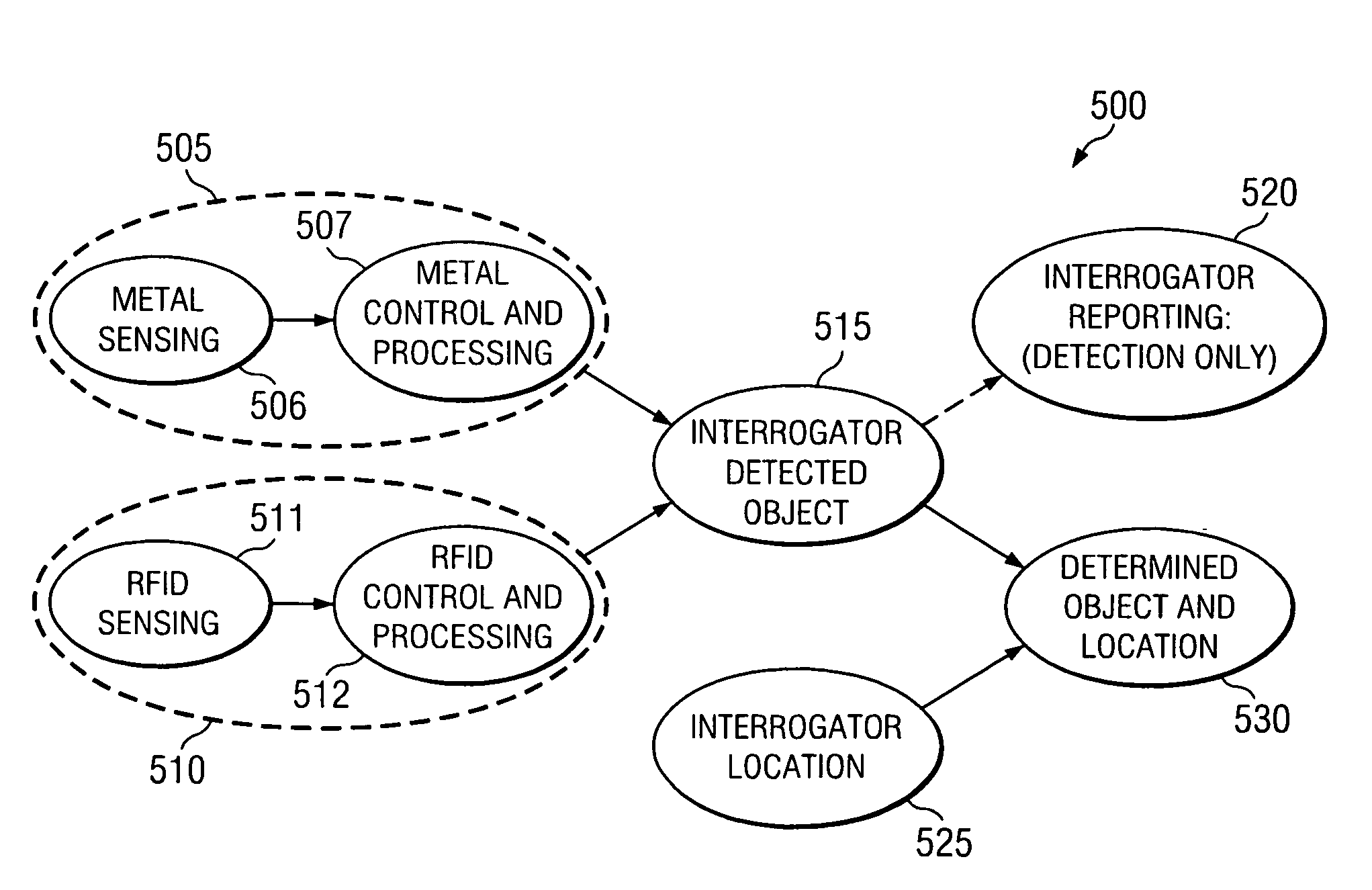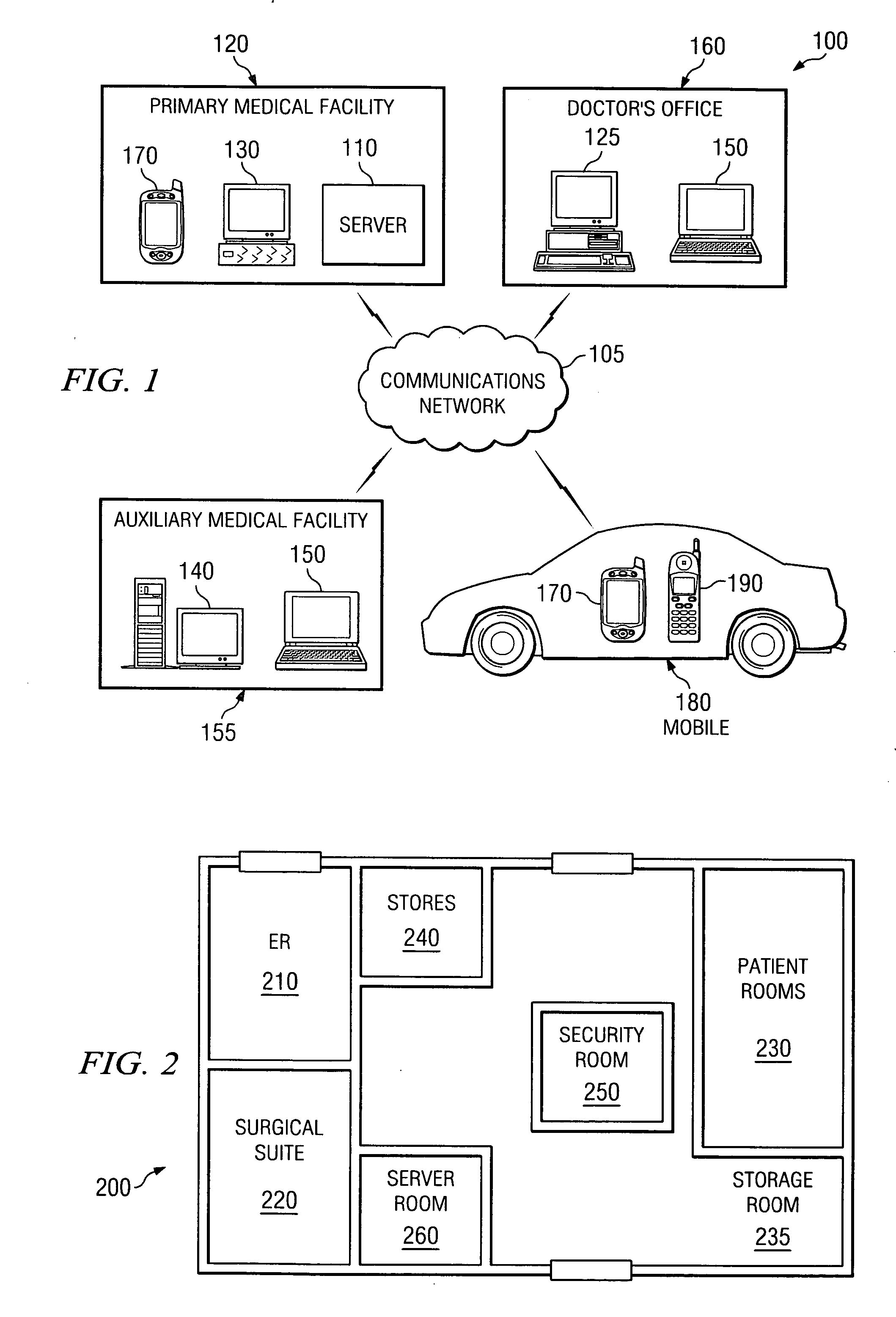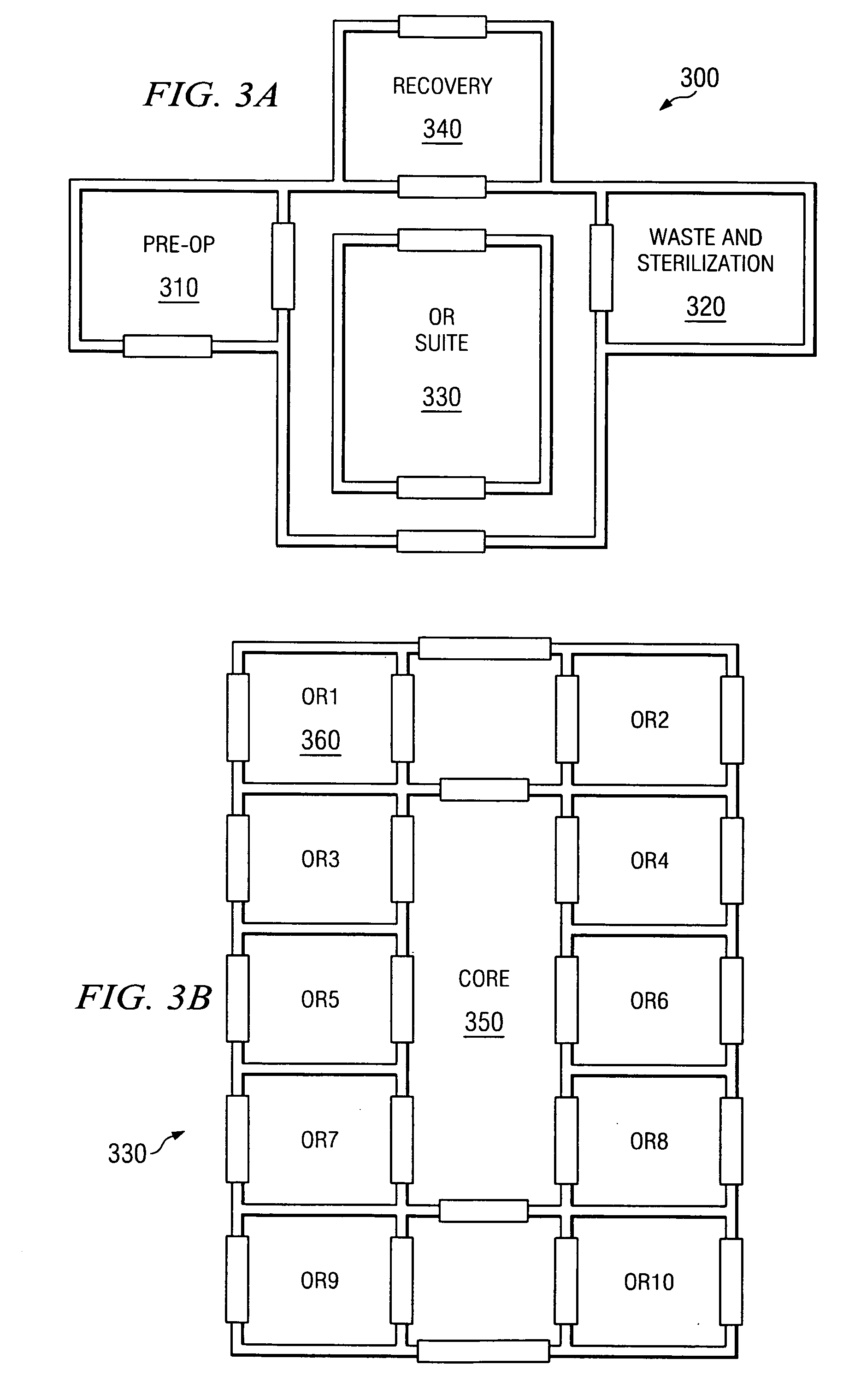Interrogator and interrogation system employing the same
a technology of interrogator and interrogator body, which is applied in the field of interrogator and interrogation system employing the same, can solve the problems of increasing mortality and morbidity risk, detention of valuable professional personnel, and errors in patient patient materials
- Summary
- Abstract
- Description
- Claims
- Application Information
AI Technical Summary
Benefits of technology
Problems solved by technology
Method used
Image
Examples
Embodiment Construction
[0050] Referring initially to FIG. 1, illustrated is a diagram of an embodiment of a communication system, generally designated 100, employable in a medical environment constructed in accordance with the principles of the present invention. The communication system 100 is configured to distribute, collect and process information across a communications network 105 that may include a Local Area Network (LAN), a Wide Area Network (WAN), an Intranet, an Extranet, the Internet, the World Wide Web, the Public Switched Telephone Network (PSTN), future extensions of these (e.g., the Internet 2), or a combination thereof. For purposes of the present invention, the World Wide Web is defined as all the resources and users on the Internet that are generally using the Hypertext Transfer Protocol (HTTP). In one embodiment of the present invention, the communication system 100 communicates to each device connected thereto using Transmission Control Protocol / Internet Protocol (TCP / IP).
[0051] TCP / ...
PUM
 Login to View More
Login to View More Abstract
Description
Claims
Application Information
 Login to View More
Login to View More - R&D
- Intellectual Property
- Life Sciences
- Materials
- Tech Scout
- Unparalleled Data Quality
- Higher Quality Content
- 60% Fewer Hallucinations
Browse by: Latest US Patents, China's latest patents, Technical Efficacy Thesaurus, Application Domain, Technology Topic, Popular Technical Reports.
© 2025 PatSnap. All rights reserved.Legal|Privacy policy|Modern Slavery Act Transparency Statement|Sitemap|About US| Contact US: help@patsnap.com



